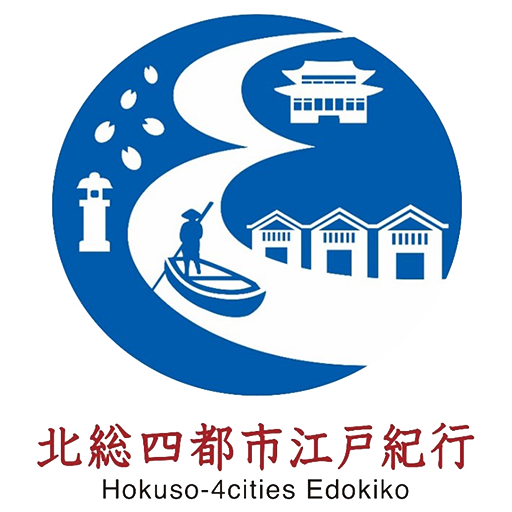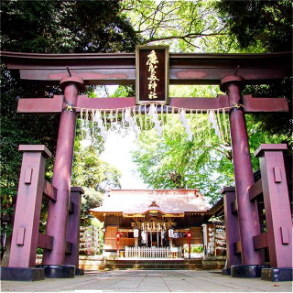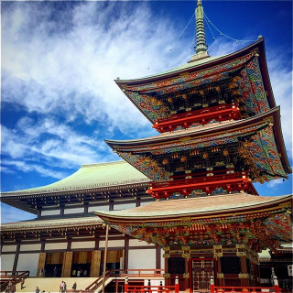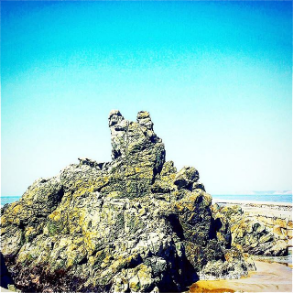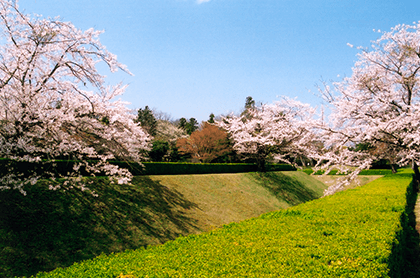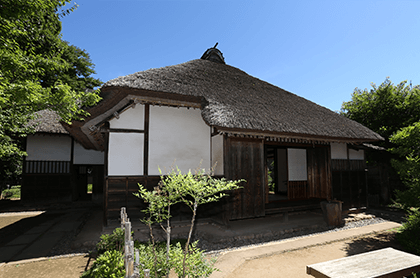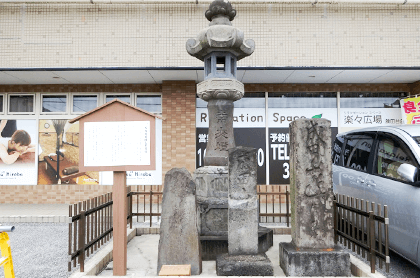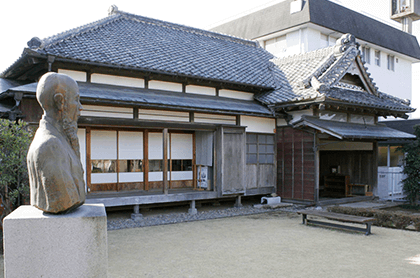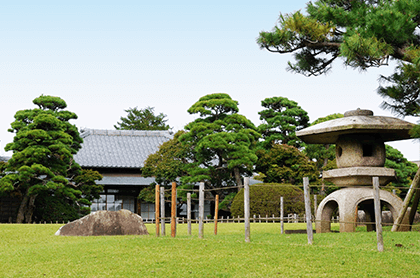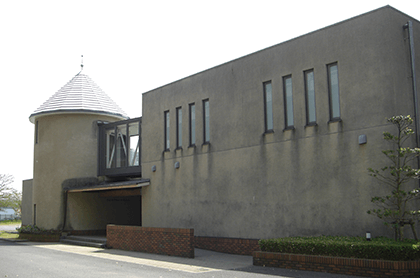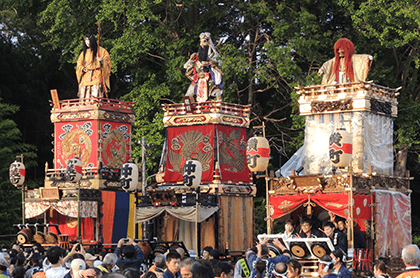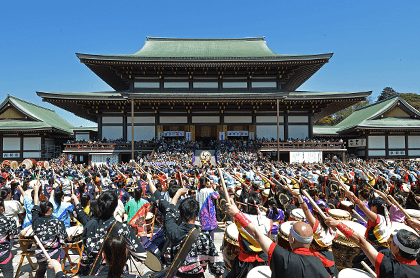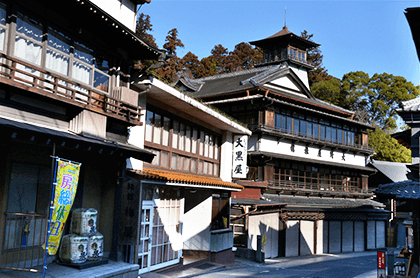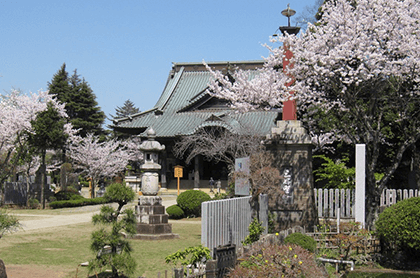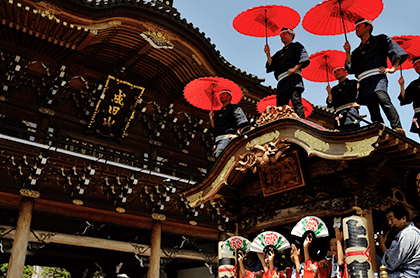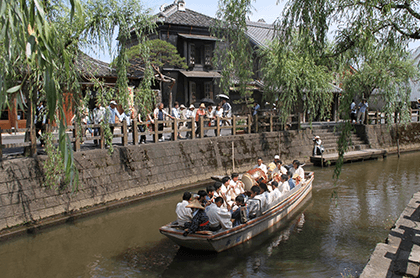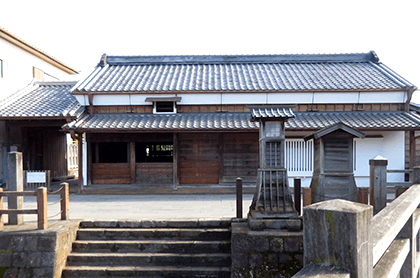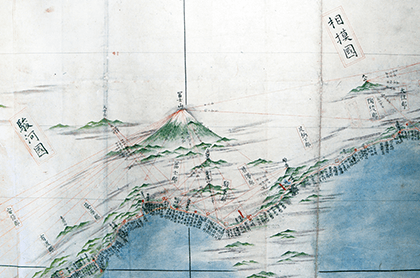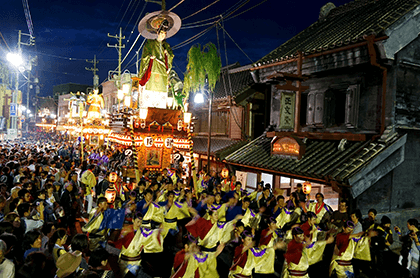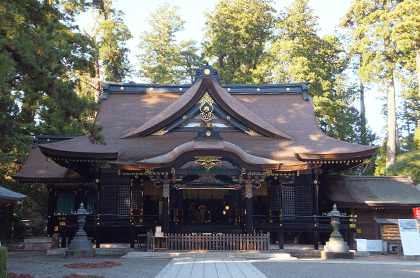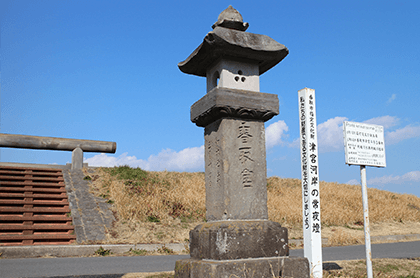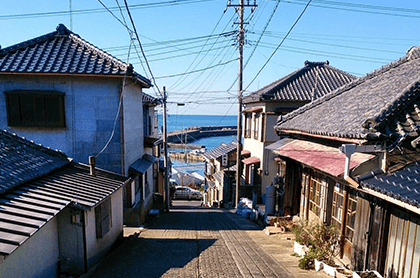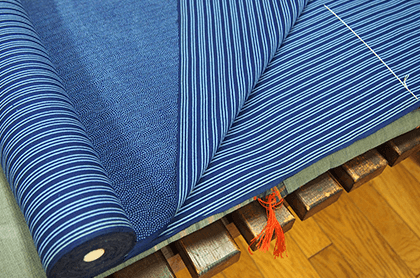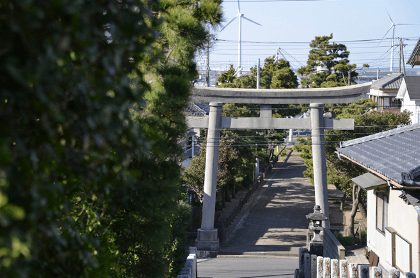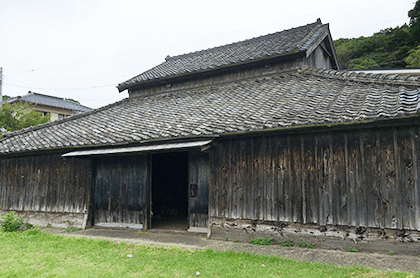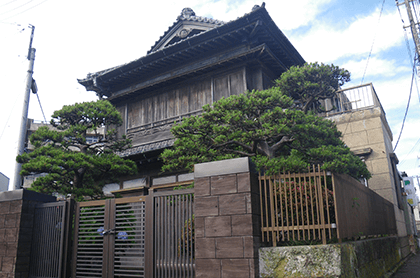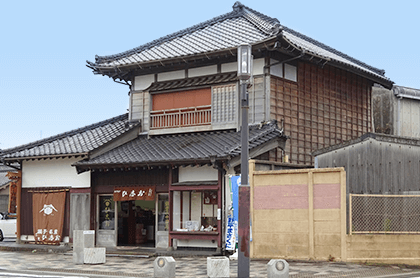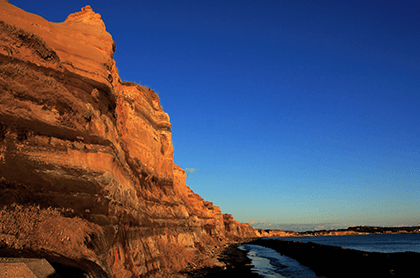 About An Edo Travelogue through Four Hokuso Cities
About An Edo Travelogue through Four Hokuso Cities Sakura
Sakura Narita
Narita Sawara
Sawara Choshi
Choshi
-
Japan Heritage: About An Edo Travelogue through Four Hokuso Cities
Overview
Four cities of Hokuso that supported and grew together with Edo (old Tokyo).
These cities, which were influenced by Edo yet developed independently, still remain much of the atmosphere of Edo.
In 2016, the four cities of Sakura, Narita, Sawara, and Choshi were designated a Japan Heritage site, under the title “An Edo Travelogue through Four Hokuso Cities — Reliving Edo in Hokuso’s Historical Districts”, and described as four historical districts that typify the outlying towns that supported the megacity of Edo.To the east, they face the Pacific Ocean, and the Tonegawa River flows through this region into that ocean.
They were situated next door to the capital city of Edo during the Edo period, and the resources and products obtained from the productive land and fishing grounds were transported to Edo via the Tonegawa River.
The culinary culture of Edo relied on the soy sauce made in Choshi and the seafood brought in from its port, and trade flourished in the riverside town of Sawara thanks to river transportation.
River-based shipping supported Edo’s livelihood and caused this region to grow in wealth.
The highways that connected Edo to the Hokuso region also played a major role in this region’s development.
Sakura Castle in Sakura assisted in the defense of Edo, and the construction of the Sakura Highway between Sakura Castle and Edo was heavily used by travelers.
Furthermore, visits to Naritasan Shinsho-ji Temple were popular in the Edo period, and the number of pilgrims going from Sakura Castle to the temple on foot swelled.
These four cities were influenced by their interaction with Edo, but they also developed independent identities: Sakura the castle town, Narita the temple town, Sawara the merchants’ town, and Choshi the port town.
These cities provide opportunities to see historical districts, which remain unchanged from the Edo period, as well as festivals and other aspects of traditional culture even today.
We invite you to come and visit the four cities of Hokuso with their diverse cultures and traditions. You are sure to experience the bustle and elegance of old Edo. -
Sakura: The castle town with a highway connecting Edo to the castle that protected it
Sakura Castle has supported Edo both administratively and militarily since its construction as the focal point of Edo’s eastern defense.
Since ancient times, the Hokuso region has occupied a strategic position overlooking the Oshu region, and in the Edo period, numerous hereditary feudal lords were deployed to Sakura because of that importance.
The Sakura Highway, which connected administratively important Sakura with Edo, was later called the Narita Highway, which goes to show how busy the Sakura castle town was because of how popular visits to Naritasan Shinsho-ji Temple were among people of that era.
Moreover, the councilor Hotta Masayoshi who helped open up Japan during the late shogunate period, worked to promote Western learning at the Han school Seitoku Shoin, and he developed it into a college town that would produce human resources for Edo.
In particular, the Sakura Juntendo was established in 1843, and many of the youth who studied there went on to play important roles in the medical field of the Meiji era, with Sakura on the cutting edge of Western studies.Japan Heritage About An Edo Travelogue through Four Hokuso Cities,
List of cultural assets-
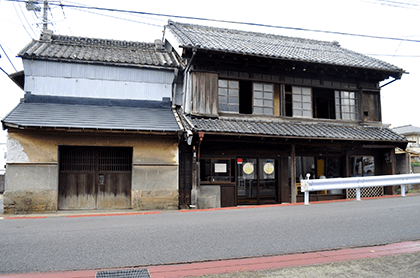
Sakura Castle Town Historical District 1.Former Hirai Family Residence 2.Sato Family Residence 3.Yamaguchi Family Residence 4.Ishiwata Family Residence 5.Mitani Family Residence
List of spots

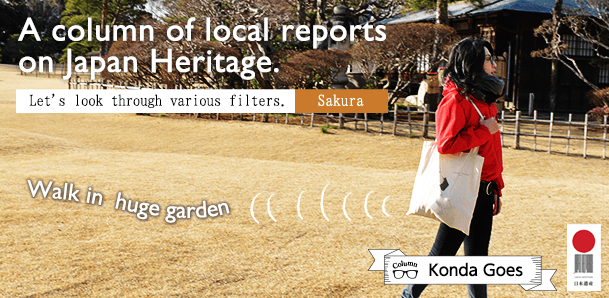
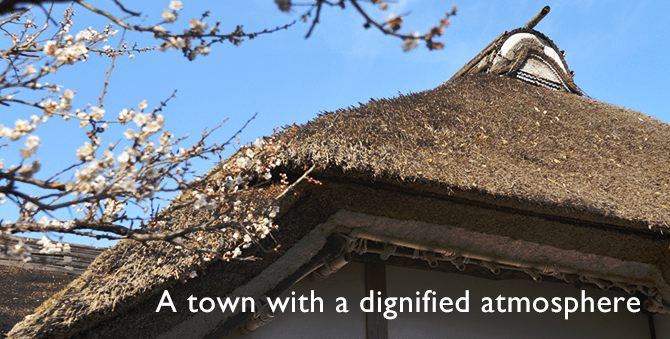
Sakura is said to be a "castle town that supported Edo both militarily and politically, and also put an emphasis on learning," but that image doesn't come across to people outside the prefecture. However, when I actually went there myself, what I saw was people with honest and passionate feelings.

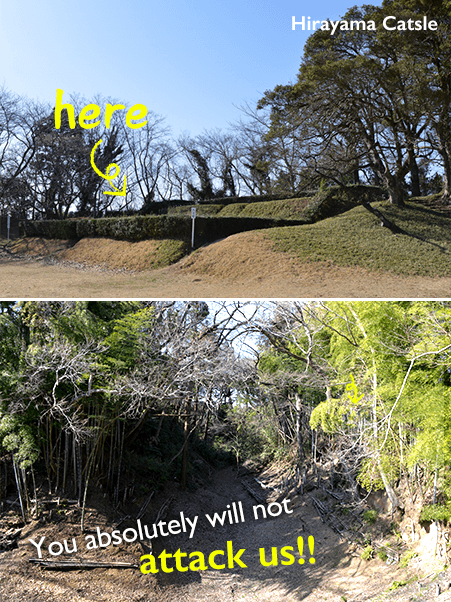
A dry moat like a bottomless pit
What is the meaning of Sakura "supporting Edo both militarily and politically"?
Sakura Castle, which used to stand here, was built in the Edo period as a "key to protecting the east of Edo", by Ieyasu Tokugawa's cousin, Toshiki Doi. It took seven years from 1611, 11 years after the beginning of the Edo Shogunate. The fact that he entrusted the building of the castle to his cousin means that Ieyasu considered the land of Sakura to be a very important base.
To prevent enemy invasion, embankment-like earth foundations were built by stacking soil, and the castle was well protected by dry and water-filled moats, also to prevent invasion.
When I looked into the remaining dry moat from the place where the castle once stood, I felt like I was being swallowed into a deeply dug space, and my legs froze. Conversely, it must have been a very difficult technique to climb up from that depth. Just looking at that one dry moat gave me a sense of the castle's aura of "You absolutely will not attack us!"
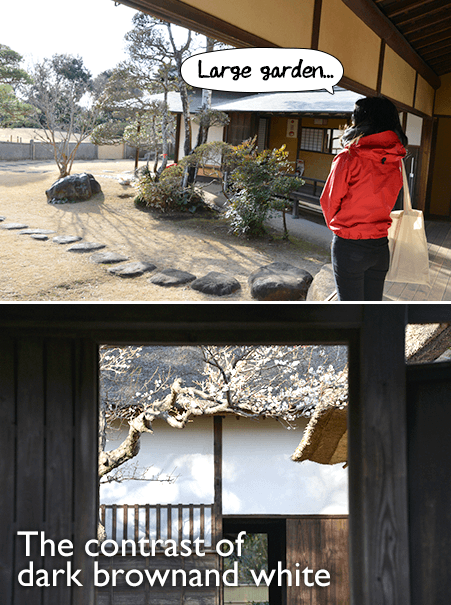
What do you think about on the veranda?
If there is a castle, it means that the clans who serve there also live in mansions they built around the castle. These are commonly called Samurai Houses. There are still some of those residences in the Sakura area.
Everything in the Sakura domain was based on the rules of a "residential system", and the retainers lived accordingly. The residential system meant that the size and style of a retainer's residence was determined by their status. In other words, a passer-by could tell at a glance that, "Oh, this retainer is a person of high status" or "The retainer in this residence has one more step to go." This seems to be a very strict rule. However, if you thought that it was embarrassing to live in a simple house, it may have been the driving force to make you work hard and elevate your status.
As I actually went around, there were obvious differences between the three samurai residences in a row. The size of the sites and the structure of the residences are really different. It felt so real, and made me realize that working is tough, in any time period.
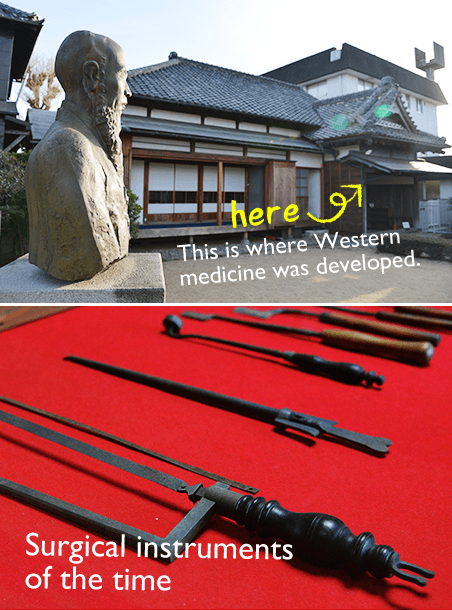
To serve people
There is a manga about a modern doctor who travels back in time to the end of the Tokugawa period and contributes to medical development, but the place that actually contributed to the development of modern medicine in Japan is the old Sakura Juntendo.
At the behest of Sakura feudal lord Masayoshi Hotta, Taizen Sato, a doctor of Western medicine who had made a name for himself in Edo, came to live in Sakura and opened the Juntendo medical school. There, he actually practiced medicine while he was educating younger medical students. Many of them had been dispatched by their individual clan to learn medicine. Because everyone was coming at the expense of their clan, they must have felt considerable responsibility and resolve, and applied themselves diligently to their studies.
Instruments used at that time and various other materials are on display in the building, and it includes an example of an operation for breast cancer. Around the end of the Tokugawa period, there was already a surgical operation to remove the affected area, and many cases were dealt with here. As advanced medicine was brought back to each clan, medicine spread to rural areas, and many lives were saved. Thinking about how this was where it all began, I felt deeply emotional.
Going around each place, there was nothing that was showy, and I was able to get a sense of the lifestyle of the Edo period people who were trying to live down-to-earth lives.
Writer: Akiko Konda
Born in Gifu Prefecture. Graduated from Kyoto Women's University. After encountering the clay figures of Kanonji Temple in Kashihara, Nara Prefecture, she visited ruins and museums in various locations and conducted ongoing research on clay figures. In addition to appearing on television and radio, at talk events etc., she is involved in activities to educate about the Jomon period and the charms of clay figures. Her books include "Hajimete no Dogu" (Introduction to Clay Figures, 2014, Sekaibunka Publishing), "Nippon Zenkoku Dogu Techo" (Japan National Clay Figure Diary, 2015, Sekaibunka Publishing), "Tokimeku Jomon Zukan" (Exciting Jomon Guide, 2016, Yama-kei Publishers, 2016), "Dogu no Real" (Real Clay Figures, 2017, Yamakawa Publishing Co., Ltd.), and "Shirarezaru Jomon Life" (Unknown Life of the Jomon Period, 2017, Seibundo Shinkosha).
How about this? Notes on walking around Sakura
-
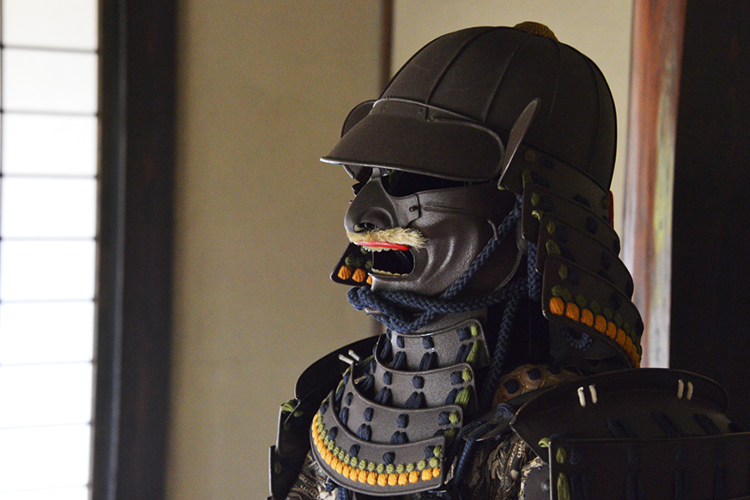
Let's take a look at the armor in the Samurai House.
In the Samurai House, the furnishings on display give a glimpse of the lifestyle of Sakura's samurai.
One thing you shouldn't miss when visiting a samurai residence is the armor. Two suits of armor are displayed, one large and one small. Also, it seems that events were you can try on the armor are held several times a year, so it's worth checking the homepage, etc. -
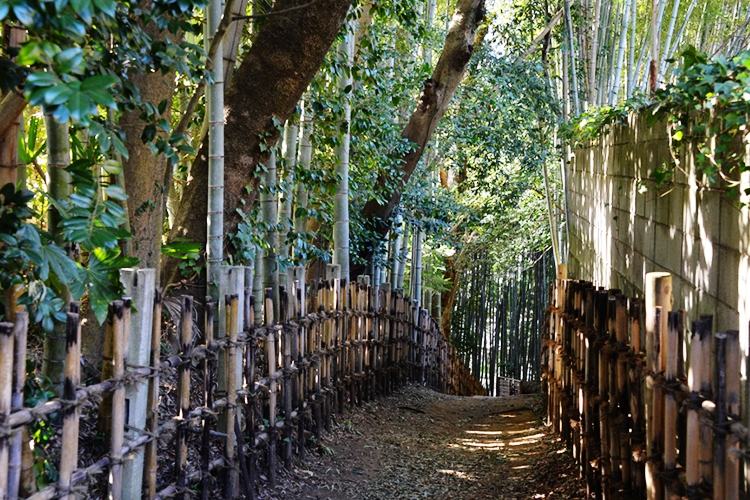
A picturesque pathway
A pathway that connects with the Samurai House street is called "Hiyodori-zaka". It seems that it is also called the Samurai Pathway. The path, surrounded by bamboo groves that extend straight up to the sky, cuts out the light of the sun slightly, creating an indescribably picturesque atmosphere. Let's walk down the slope, feeling like a samurai.
-
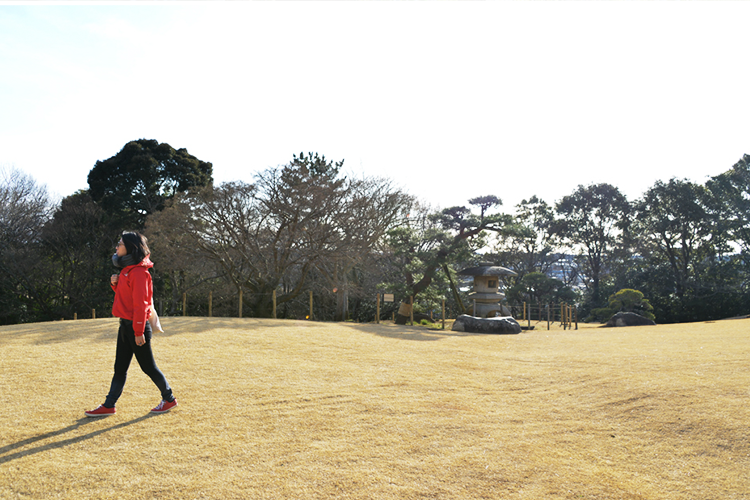
Enjoy the four seasons in the large garden.
Former Masatomo Hotta Garden is the mansion/garden of Masatomo Hotta, who was the last lord of Sakura. This garden is also affectionately known to the locals as "Sakura Garden". As that name suggests, with cherry blossoms in spring, hydrangeas in early summer, and colorful leaves in autumn, the garden is adorned by the various flowers of the changing seasons.
-
Narita: A temple town serving Shinsho-ji Temple
Narita developed as a temple town for Shinsho-ji Temple, which was a recipient of the passionate faith of the commoners.
First, some background is in order. The deep devotion of kabuki actor Ichikawa Danjuro (known by the stage name Naritaya), the immense popularity of the kabuki drama “Naritasan Funjin Fudo”, and the success of a campaign to openly exhibit invaluable statues in Edo Fukagawa caused visits to Naritasan Shinsho-ji Temple to skyrocket among the commoners.
Travelers would visit important locations on their way to and from Narita, such as the Sakura Castle town and Sogo Reido.
Rows of inns sprung up, offering food made from the fish of Tonegawa River and Inbanuma Marsh or eel flavored with Choshi soy sauce for the refreshment of tired pilgrims on the road to the temple.Japan Heritage About An Edo Travelogue through Four Hokuso Cities,
List of cultural assetsList of spots



When we think of Naritasan Shinshoji Temple, it brings to mind the many people who come for their New Year's shrine visit, or we think of it as the temple that has had a strong connection with Ichikawa Soke, or the head of the Ichikawa kabuki family since the time of Edo Period actor Ichikawa Danjuro I, who is called "Narita-ya".
However, it was the merchant class of Edo who left Naritasan Shinshoji as it is in the present.

Let's go triumphantly to Naritasan Shinsoji!
When I get off the train at the nearest station, I already see the approach to Naritasan Shinshoji Temple.
I stroll towards Shinshoji, browsing in the souvenir shops that line both sides of the road.
Although I planned to first pay my respects to Narita Fudoson, which is the principal object of worship, my feet just keep stopping here and there. It crosses my mind that perhaps this is the real purpose of my visit, but it seems that this was not the first time for someone to find such a pleasure in walking along the approach.
Worshipping at shrines and temples spread among the common people during the politically stable Edo period. At a time when there was little entertainment, it seems that a pilgrimage to a temple or shrine was one form of enjoyment, and everyone went out together. That seems right.
People would take time off work to go on the journey, giving those around them the perfectly reasonable reason that, "I'm off to ask a little favor of o-Fudo-sama in Narita." While the journey to Narita normally should have taken a night and two days, according to books on the subject, many people enjoyed a relaxed journey, staying overnight around Funabashi. I get a sense of them wanting to greedily enjoy the pilgrimage, but why shouldn't they?

Pilgrimage to Narita, clearing away the barriers in the mind
Supporting this pilgrimage was an organization called Sankeiko.
The sect members gradually saved up the expenses for the coming trip, and in cases where the travel expenses from remote areas were too high, a representative of the sect would head out on the pilgrimage armed with everyone's prayers.
You can still see the names of the sects from each district on signboards under the eaves of the inns along the temple approach. Looking at them, the happy faces of the Edo period travelers come to mind, and naturally bring a smile to my face.
By the way, in the late Edo period, there were more than 200 Narita Fudo sects with hundreds or even thousands of members in the city of Edo.
As for why they were so popular, at that time there were barrier stations at every important location around the country, so it was impossible to visit various places as easily as we can now. But there wasn't a single barrier between Edo and Naritasan Shinshoji.
As a result, if the nice weather put them in the mood, the people of Edo were able to enjoy a worry-free pilgrimage to Narita.

Why not stuff your face with steaming hot broiled eel?
Well, what did the travelers wish for after they went through the gate and stood before Fudomyo, who is enshrined in the main hall? First of all, they would feel relief and give thanks that they had arrived safely. After that, I wonder if they had a relaxed talk with Fudomyo.
No matter what era you live in, you'll never be without troubles. Even if they seem trivial to others. The traveller would tell Fudomyo about the suffering that was gathering in their heart like dust. "It's all right, that suffering has ended today. I will listen to it all." How purified would the traveler have felt by the voice of Fudomyo, which reached only into their own heart?
And off would go the traveler, their emotional baggage cast off, and their heart beautifully refreshed!
Off to the eel restaurants which line the approach road. Hmm, how about there? No, I like the skill of these skewers. No, no, I heard that the secret sauce over there has been passed down the generations. There might have been a conversation like this.
It seems that the unaju (broiled eel on a bowl of rice) that you get on the approach road was 200 mon in the late Edo period, about 5,000 yen in today's money. The rising steam and aroma of the sauce the moment the lid of the unaju lunchbox was opened must have blown away the exhaustion of the journey. With every bite, they would give thanks for the divine protection of Fudomyo, and wonder about what to get as a souvenir for the family they left behind.
In this way, supported by the economic strength of Edo, Naritasan Shinshoji continued to support the hearts of the citizens, and to this day it still lends an ear to people's hearts.
Writer: Akiko Konda
Born in Gifu Prefecture. Graduated from Kyoto Women's University. After encountering the clay figures of Kanonji Temple in Kashihara, Nara Prefecture, she visited ruins and museums in various locations and conducted ongoing research on clay figures. In addition to appearing on television and radio, at talk events etc., she is involved in activities to educate about the Jomon period and the charms of clay figures. Her books include "Hajimete no Dogu" (Introduction to Clay Figures, 2014, Sekaibunka Publishing), "Nippon Zenkoku Dogu Techo" (Japan National Clay Figure Diary, 2015, Sekaibunka Publishing), "Tokimeku Jomon Zukan" (Exciting Jomon Guide, 2016, Yama-kei Publishers, 2016), "Dogu no Real" (Real Clay Figures, 2017, Yamakawa Publishing Co., Ltd.), and "Shirarezaru Jomon Life" (Unknown Life of the Jomon Period, 2017, Seibundo Shinkosha).
How about this? Notes on walking around Narita
-

A story about medicine popular with worshippers
When you walk along the approach to Naritasan, make sure not to miss the Mitsuhashi Pharmacy. They have been selling "Hara no Kusuri Naritasan Hitotsubo Maru" here since the store was founded in the Genroku era. In the past, it was described as a travel medicine, and if a traveler who visited Naritasan Shinshoji Temple brought this medicine, it was good for any ailment. You can buy it even now. Let's stop by as if we were a traveler.
-

The previous main hall, Shakado Hall.
After visiting the Daihondo Main Hall, let's continue walking to the left. There you'll find the Shakado Hall, built in 1858. This Shakado Hall, which is actually the former main hall, is said to have been moved to its current location prior to the construction of the Daihondo. Although it is a little small compared to the current main hall, it has sculptures and other things that are worth seeing!
-

The main hall before last, Komyodo Hall
I thought there was only the previous main hall, there was another main hall before that. That is Komyodo, built in 1701. By the way, if there was a main hall before last...there was one before that that, too. That's the Yakushido on the approach road. When you see it like this, you get a sense of the history of Naritasan changing over the eras.
-
“If you want to see Edo, visit Sawara, whose main street bests Edo.”
This song describes Sawara’s prosperity during the Edo period.
During the Edo period, Sawara occupied an important location where the highway and river traffic intersected, and it developed into number-one commercial port city on the lower Tonegawa River, thanks to such commercial activities as sake brewing that relied on river transport.
The city also flourished with the influx of shrine pilgrims thanks to its location as the starting point of the approach to Katori-jingu Shrine.
The town was also home to administrative operations conducted by upper-class merchants called “danna-shu” (“the masters”), and one of them, Ino Tadataka, the creator of the Dainihon Enkaiyochi Zenzu (a map of all Japan), and the region's economic development was influenced by its culture and education.Japan Heritage About An Edo Travelogue through Four Hokuso Cities,
List of cultural assetsList of spots



The moment I slipped through the ticket gate and passed through the noren curtains with the name "Sawara Station" boldly dyed in white, my mood was instantly lifted.
What kind of Edo would I see?
I decided to talk a relaxing walk along the Onogawa River, which is a key part of the district.

A townscape that enriches the heart
The Onogawa River, which flows through the town, leading to the Tone River and continuing to the megacity of Edo, was an important water transportation route for the people living there during the Edo period.
Even now, the houses that line both banks remain elegant, and they are all such wonderful buildings that one can help stopping to look at each and every one of them.
For example, a liquor store. If you look inside, you can see rows of itobin (18-liter) bottles at the back of the store, like in a historical drama. The atmosphere is such that you can almost hear the sharp exchanges between the store clerks and the customers that have been repeated unchanged since the old days of Edo, "I'll be glad if you buy it, but you mustn't drink too much."
And not just the liquor store. A warm atmosphere came drifting from the buildings of the town, made up of the many and varied layers of people's activities.
Even now people are still alive there. Living their lives.
It may not be spectacular, but walking around the town, the life of the people that has remained unchanged for so long has become the breath of the town and enriches the hearts of those who visit.
Not only did time seem to flow gently, but a comfortable humidity enveloped the town of Sawara.

How about boarding a boat-shaped time machine?
I decided to take a boat ride, something "you have to do if you come to Sawara!"
When I visited, it was winter. I was delighted there was a kotatsu heater on board to warm up my frozen body, and as soon as I put my feet under it, the boat slowly set off.
"The willows must be beautiful in early spring," I thought as I viewed the townscape from the boat. The scenery I had seen as I walked shortly before seemed somehow different. Only my viewpoint had changed, so what was this feeling?
On the roadway it's the present, but for us floating along on the waterway time is the same as 300 years ago. Even though I am just relaxing on a boat and watching the scenery, I feel like I've travelled back in time to the Edo period.
Did the people of those days head for Edo with miso, soy sauce, and sake on the boat? Business does not always go well. Maybe merchants would carry their goods in a boat, from the Onogawa River to the Tone River, and then to Edo, so as to shake off their various worries.
As a relay point for shipping goods, Sawara was lively and vibrant at that time, with as many as 5,000 residents. The boat on the Onogawa River was like a time machine connecting the Edo period and the present.

Tadataka Ino is a middle-aged star!
There was a fine old house in front of the boat terminal.
It is the shop that was run by Tadataka Ino, a merchant and surveyor of the Edo period who walked the entire coastline and made the first map of Japan, the "Maps of Japan's Coastal Area".
On entering the grounds, there was a bronze statue with a very refreshing face that seems to have no regrets.
Tadataka was adopted at the age of 17 and, after many twists and turns, succeeded in reviving the fortunes of the Ino family. In his later years, he handed down the family business to his son and left for Edo at the age of 50.
Speaking of 50 years, that was the average lifespan of the Edo period.
At that time, he made up his mind to study astronomy, and at the age of 55 he left for Ezo. What a desire to take on new challenges!
Unexpectedly, I got from Tadataka Ino the courage to live like I can do anything I want to do as long as I don't give up on myself.
The Sawara district not only had the atmosphere of the Edo period but was also a town that quietly told of the Edo people's spirit of taking on new challenges.
Writer: Akiko Konda
Born in Gifu Prefecture. Graduated from Kyoto Women's University. After encountering the clay figures of Kanonji Temple in Kashihara, Nara Prefecture, she visited ruins and museums in various locations and conducted ongoing research on clay figures. In addition to appearing on television and radio, at talk events etc., she is involved in activities to educate about the Jomon period and the charms of clay figures. Her books include "Hajimete no Dogu" (Introduction to Clay Figures, 2014, Sekaibunka Publishing), "Nippon Zenkoku Dogu Techo" (Japan National Clay Figure Diary, 2015, Sekaibunka Publishing), "Tokimeku Jomon Zukan" (Exciting Jomon Guide, 2016, Yama-kei Publishers, 2016), "Dogu no Real" (Real Clay Figures, 2017, Yamakawa Publishing Co., Ltd.), and "Shirarezaru Jomon Life" (Unknown Life of the Jomon Period, 2017, Seibundo Shinkosha).
How about this? Notes on walking around Sawara
-

A story about how there used to be more boat docks.
Looking at the stone banks on the left and right of the Onogawa River, there are places where the pitch of the stone wall is suddenly different. This is where "dashiba", places for unloading, have been filled in. It seems there were many "dashi" in the past, and you can sense the busy faces of the time.
-

A story about how even a big fire didn't burn it down.
As might be expected of a commercial town, the main streets that form a cross centered on the Onogawa River are lined with buildings that remain in the Edo style. Many buildings were destroyed by the fire in the Meiji period, but the "Nakamuraya" store escaped the fires and remains a valuable building from the Edo period.
-

A story about the old approach road to Katori Shrine.
One of the torii gates of Katori Shrine stands facing the Tone River on the Tsunomiya Torii Gashi river bank. Once this was the entrance to the approach road. When you go down the street a bit, there is Tadasu-bshi Bridge painted in red. It seems that it is called "Jonnuki-bashi (zori cast off bridge)" because it was where you changed from old zori sandals to new sandals.
-
Choshi: A port town that supported Edo’s culinary culture through shipping on the Tonegawa River
Improvement work on the Tonegawa River, carried out to protect the city of Edo from the flooding, led to the development of shipping on the Tonegawa River, and the Tonegawa River shipping route bound for Edo from Choshi served as a major conduit for transporting goods to Edo.
Water transportation routes were also used by travelers thanks to the popularity of short-distance trips by Edo commoners, including trips to Naritasan Shinsho-ji Temple, “three-shrine visits” to Katori-jingu Shrine and elsewhere, and “Choshi seaside tours” to beaches like Byobugaura.
The ports of Choshi, including Togawa Port, which was built by Sakiyama Jiroemon after moving here from Kishu in the early Edo period, supported Edo’s culinary culture. The soy sauce brewing industry of Choshi led to the invention of Kanto-style soy sauce, which was popular among the people of Edo and caused Edo's culinary culture to flourish.Japan Heritage About An Edo Travelogue through Four Hokuso Cities,
List of cultural assetsList of spots



Around the end of the Tokugawa period, a book called "Tonegawa Zushi" was created. It introduced the historical sites of the Tone River Basin, something like what we would now call an information magazine.
It is surprising that such a book was published since the Edo period, but it seems that it listed the recommended spots in Choshi, which was a great vacation destination for people in Edo.

Following sardines, everywhere
The scenery I saw from that slope was really, truly beautiful, and I couldn't help but thank Jiroemon Sakiyama for developing the townscape.
That is the town of the Tokawa, which spreads out like the squares of a chessboard from the Choshi Electric Railway terminal at Tokawa station down to the sea. The roof tile of the houses densely lined up on the slope shimmer just like the sea, and the sea and the earth are mixed together with the same sparkle. Even now, there are people who make a living from fishing just as they did in the Edo period.
Tokawa was a planned town, designed by Sakiyama as a fishing port in the first year of Manji (1658). He came from Kishu Wakayama, but like many others at the time, he was a Kishu fishermen who, following the sardines that moved along with the Kuroshio Currents, is said to have developed the fishing ground around the Boso Peninsula and other areas.
The fishermen of Kishu would probably have liked Choshi, which has a similar environment to their birthplace due to the influence of the Kuroshio. Perhaps it was the fishermen's thankfulness for the success they found in this area and their preparedness to live in Tokawa in the future that led to the town being built here. And the activity of this town is also written about in "Tonegawa Zushi".

It can't start without soy sauce! Japanese cuisine in Edo
It was not only fishermen who came to Choshi on the Kuroshio.
Gihei Hamaguchi I, who was living in Hiromura (now Hirogawa-cho), the Wakayama prefecture village next to Yuasa, said to be the birthplace of soy sauce, moved to Choshi and started making soy sauce. This was the beginning of the Yamasa Soy Sauce that everyone now knows.
He is said to have thought about doing business in Choshi inspired by the success of his countryman Sakiyama, who had built the town of Tokawa. Hearing that Choshi's environment was similar to that of Yuasa, which had boomed with the soy sauce industry, probably inspired him to think that, "if I make soy sauce in Choshi and bring it to Edo, wouldn't it be a good business?"
Hamaguchi's reading of the situation was spot on, and Choshi not only supplied fresh fish to Edo through its fishing industry, but also developed as a soy sauce town, supporting such Edo food culture staples as sushi and soba.
Would it be an exaggeration to say that without Hamaguchi's business genius and desire to take on a challenge, there would have been no foundation for the food culture of Edo?

Byobugaura, a switch to make us think of long ago
Byobugaura was of course described in "Tonegawa Zushi", and was also drawn in "Views of 60-odd Provinces" by Hiroshige Utagawa, the famous Ukiyoe artist of the late Edo period. Even if viewed from far away, the size of its scale is overwhelming.
This was the end point of "Iso Tour", where the people of Edo enjoyed boating using the Tone River water transport. People who boarded a small boat and were floating along and sight-seeing must have been surprised by the huge cliffs gradually approaching. Living in the city of Edo, it is the kind of magnificent and wild nature that they would not normally be able to see.
But there is more to Byobugaura than that. Thanks to continued erosion by the strong waves, its cross section is always beautiful and the stripes of the strata can be clearly seen. Many layers overlap, drawing soft curves and it's like watching a painting woven by nature. We can understand what it was that made Hiroshige want to draw it in a picture.
Theses days, there are windmills lined up on the cliffs, but that creates a scene like something in a foreign country, and is even fantastical.
The town of Choshi, that became widely known through "Tonegawa Zushi", was a town that offered physical and spiritual nutrition to the people of Edo.
Writer: Akiko Konda
Born in Gifu Prefecture. Graduated from Kyoto Women's University. After encountering the clay figures of Kanonji Temple in Kashihara, Nara Prefecture, she visited ruins and museums in various locations and conducted ongoing research on clay figures. In addition to appearing on television and radio, at talk events etc., she is involved in activities to educate about the Jomon period and the charms of clay figures. Her books include "Hajimete no Dogu" (Introduction to Clay Figures, 2014, Sekaibunka Publishing), "Nippon Zenkoku Dogu Techo" (Japan National Clay Figure Diary, 2015, Sekaibunka Publishing), "Tokimeku Jomon Zukan" (Exciting Jomon Guide, 2016, Yama-kei Publishers, 2016), "Dogu no Real" (Real Clay Figures, 2017, Yamakawa Publishing Co., Ltd.), and "Shirarezaru Jomon Life" (Unknown Life of the Jomon Period, 2017, Seibundo Shinkosha).
How about this? Notes on walking around Choshi
-

The unique port scenery, seen from the shrine.
Located near Choshi fishing port, Kawaguchi Shrine has long been of religious significance for the boat captains and fishermen whocome in and out through the Tone River estuary. This shrine has two torii gates. Be sure to walk from the torii near the Tone River. After climbing up the long staircase, turn around and, amidst the subtle smell of the sea breeze, you see the expanse of scenery, the way the river connects to the ocean, windmills, and fishing boats.
-

Still today, the fishing industry that supported Edo cuisine.
Choshi port, which began as the port of Tokawa and was developed by Jiroemon Sakiyama, who emigrated from Kishu, supported the food culture of Edo. The Choshi fishing industry still boasts one of the best annual catches in Japan. If you go to the fishing port, you will be able to see blue sea, blue sky, white gulls and brightly colored fishing boats.
-

A rare white postbox.
There is a very unusual white postbox to the right of the entrance to the Inubosaki Lighthouse. With the pale blue sky behind, it shines white and is very beautiful.
In addition, the Inubosaki Lighthouse was the first lighthouse that used bricks made in Japan. You can climb the 99 steps to the top.


